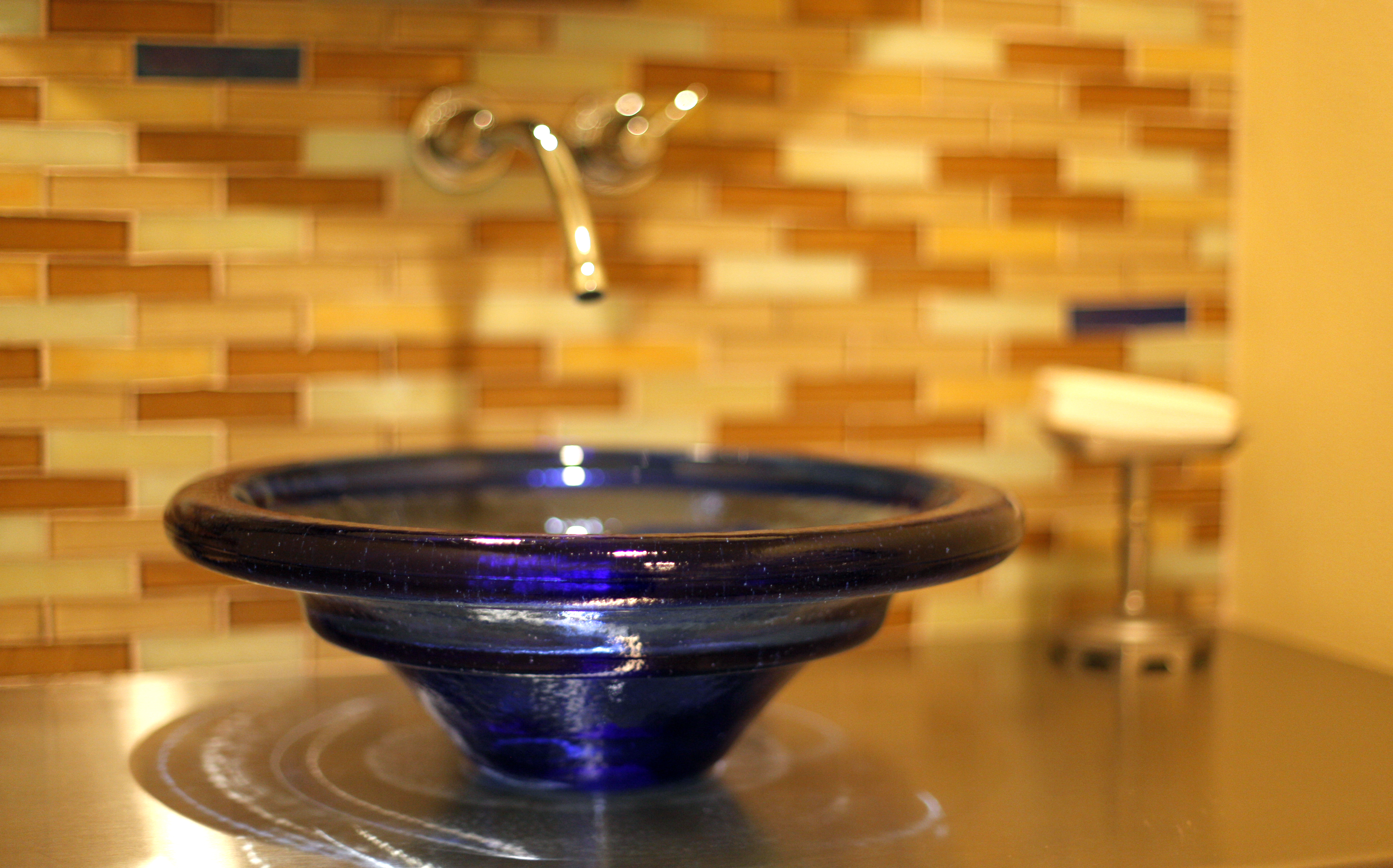The National Kitchen and Bath Association polled 100 of its members who designed kitchens or bathrooms during the last three months of 2010. From those surveys, trends in kitchen/bath design were found nationwide, not just by geographic areas. We checked with designers Kris Keith and Becky Worley at Classic Cabinetry on Broad Street to see whether these trends had made their way into local home remodels and new builds. Classic Cabinetry is an NKBA member, though these designers were not participants in this survey.
Chill Out
The trend: The incorporation of wine refrigerators into kitchen design is on the decline, while unchilled wine storage is growing in popularity. Although 51 percent of the designers said they incorporated wine storage areas into kitchens in 2010, undercounter wine refrigerators fell from 50 percent to 36 percent. Other cabinetry options falling out of favor: lazy Susans, pullout racks and appliance garages.
- Kris Keith: "Yes, we do more cabinetry wine storage than wine refrigerators, but I have not seen a decline in the others."
French-door refrigerators
The trend: The French-door refrigerator (a half-and-half armoire style with a double-door refrigerator on top and freezer on bottom) has strengthened its position as the type most often chosen for kitchens, jumping from 67 to 78 percent of respondents. Freezer-top refrigerators were specified by only 8 percent of designers; side-by-side units rose slightly from 46 to 49 percent.
- Kris Keith: "True. The French-door refrigerator is a double-door refrigerator so you get full-width access to the refrigerator, with one or two drawers below to access the freezer. They are popular because your go-to place is the refrigerator, so everything is at eye level in this style; you don't have to bend down. Sometimes, with side-by-side models, the freezer side is so narrow you can't event fit a frozen pizza in there."
Hot cooktops
The trend: Induction cooktops haven't overtaken gas models, but they're closing the gap.
- Kris Keith: "True. Gas has always been a preferred way to cook, but an induction cooktop has a smooth surface so it is easy to clean and maintain, and it doesn't get hot to the touch; only the eyes heat. Locally, induction cooktops are gaining in popularity and interest, but we're still installing mostly gas models. An induction cooktop is more expensive than a gas stovetop."
- Becky Worley: "The induction cooktop looks like glass, it gets hot immediately and it's an energy saver. But it requires a special set of pots and pans that have a magnetic bottom."
LED lighting
The trend: Incandescent lighting continues its journey to obsolescence; the use of light-emitting diode lighting is up.
- Kris Keith: "True. Homeowners are using either LED or Xenon lighting. The preference is LED [above] but it's more expensive. Incandescent is going away because it creates a colder feel in a room."
Talking trash
The trend: 89 percent of kitchens designed by survey respondents including trash or recycling pullouts. Garbage disposals were incorporated by 86 percent of designers, up from 75 percent the previous year.
- Kris Keith: "I'm not doing many kitchens at all with trash compactors. Most kitchens include a trash-can pullout or two pullouts for recycling bins. We have cabinetry that can hold up to four pullouts for dividing recyclables."
Quartz countertops
The trend: Quartz continues to take away market share from granite in bathroom vanity tops. In 2009, 85 percent of designers incorporated granite into a design, compared to 48 percent in quartz. Last year that gap narrowed to 83 percent granite and 54 percent quartz.
- Kris Keith: "I would have to disagree. We sell far more marble and granite than quartz tops, primarily because of cost. Granite is generally less expensive than quartz tops, depending on the color used."
- Becky Worley: "Quartz is a little more expensive, but the beauty of quartz is that it's a workhorse counter that holds up to wear and tear, and you can get it in a variety of colors; even wild colors such as fire-engine red, orange or lime green. If you want the characteristics of granite, but in a more predictable pattern for your countertop, then quartz is the way to go."
Baths go Green
The trend: Green bathrooms now refer to color palette, not necessarily that they are eco-friendly. White and beige remain the most commonly used color tones in baths, but green was chosen by 24 percent of designers as the coming trend. On the way out: brown.
- Kris Keith: "True. The most popular greens are in the medium tones: sage or olive green. Shades of beige and charcoal are used as accents. In the last year, we've gotten a lot of new colors from cabinet manufacturers trending toward chameleon colors. Green is kind of like a chameleon -- if you put it with blue it looks more blue, put it with gray and it turns gray. Green is the new neutral."
Sinks: in or out
The trend: Under-mount sinks continue to dominate newly remodeled bathrooms, but vessel sinks have become the clear second choice among designers.
- Kris Keith: "Yes to the first; under-mount sinks remain the dominant choice in bath remodels.
"The vessel sink looks like a bowl sitting on top of the countertop. We rarely use vessel bowls in master baths or secondary baths. They are primarily used in powder rooms where you want to make a statement. Homeowners don't prefer vessel sinks because they require constant cleaning around them."
In for a nickel
The trend: The percentage of designers who specified satin-nickel faucets rose from 41 percent to 63 percent in kitchens and 45 percent to 57 percent in baths. Brushed-nickel faucets fell noticeably.
- Kris Keith: "Yes, satin nickel is the most popular color for fixtures."
- Becky Worley: "We're also seeing people choose more polished-chrome and polished-nickel faucets."
